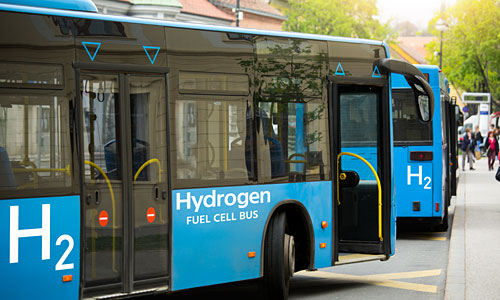The Hydrogen Age March 2021
Want more free featured content?
Subscribe to Insights in Brief

Japan has a goal to generate power using 10 million tons of hydrogen annually by 2030. As part of its plan to achieve zero carbon dioxide emissions by 2050, utility Jera Co. (Tokyo, Japan)—a joint venture of Tokyo Electric Power Company Holdings (Tokyo, Japan) and Chubu Electric Power Co. (Nagoya, Japan)—will "shut down all inefficient (supercritical or less) coal power plants and conduct demonstration tests of mixed combustion with ammonia at high-efficiency (ultra-supercritical) coal power plants" (www.jera.co.jp/
As transportation sectors increasingly go electric, a key impediment to the adoption of hydrogen-fuel-cell vehicles is that hydrogen-distribution networks are in their infancy. Sempra Energy (San Diego, California) utilities Southern California Gas Company and San Diego Gas & Electric plan to begin a demonstration program in which they inject from 1% to 20% hydrogen into existing natural-gas networks in 2021 to help decarbonize the natural-gas grid. Several European countries are planning similar trials. Blends of hydrogen and natural gas could see direct use for heating or power generation. Aviation is another transport application area for hydrogen in the medium term. Airbus (Leiden, Netherlands) is evaluating its ZEROe concept aircraft—which features multiple individual hydrogen-fuel-cell-technology-based propulsion systems (the so-called pod configuration)—and other hydrogen technologies for potential development beginning in 2025. The European Commission also highlights hydrogen-powered aircraft in its recent strategy for smart and sustainable mobility.